Efi Kokiopoulou
Representing Online Handwriting for Recognition in Large Vision-Language Models
Feb 23, 2024



Abstract:The adoption of tablets with touchscreens and styluses is increasing, and a key feature is converting handwriting to text, enabling search, indexing, and AI assistance. Meanwhile, vision-language models (VLMs) are now the go-to solution for image understanding, thanks to both their state-of-the-art performance across a variety of tasks and the simplicity of a unified approach to training, fine-tuning, and inference. While VLMs obtain high performance on image-based tasks, they perform poorly on handwriting recognition when applied naively, i.e., by rendering handwriting as an image and performing optical character recognition (OCR). In this paper, we study online handwriting recognition with VLMs, going beyond naive OCR. We propose a novel tokenized representation of digital ink (online handwriting) that includes both a time-ordered sequence of strokes as text, and as image. We show that this representation yields results comparable to or better than state-of-the-art online handwriting recognizers. Wide applicability is shown through results with two different VLM families, on multiple public datasets. Our approach can be applied to off-the-shelf VLMs, does not require any changes in their architecture, and can be used in both fine-tuning and parameter-efficient tuning. We perform a detailed ablation study to identify the key elements of the proposed representation.
Pi-DUAL: Using Privileged Information to Distinguish Clean from Noisy Labels
Oct 10, 2023Abstract:Label noise is a pervasive problem in deep learning that often compromises the generalization performance of trained models. Recently, leveraging privileged information (PI) -- information available only during training but not at test time -- has emerged as an effective approach to mitigate this issue. Yet, existing PI-based methods have failed to consistently outperform their no-PI counterparts in terms of preventing overfitting to label noise. To address this deficiency, we introduce Pi-DUAL, an architecture designed to harness PI to distinguish clean from wrong labels. Pi-DUAL decomposes the output logits into a prediction term, based on conventional input features, and a noise-fitting term influenced solely by PI. A gating mechanism steered by PI adaptively shifts focus between these terms, allowing the model to implicitly separate the learning paths of clean and wrong labels. Empirically, Pi-DUAL achieves significant performance improvements on key PI benchmarks (e.g., +6.8% on ImageNet-PI), establishing a new state-of-the-art test set accuracy. Additionally, Pi-DUAL is a potent method for identifying noisy samples post-training, outperforming other strong methods at this task. Overall, Pi-DUAL is a simple, scalable and practical approach for mitigating the effects of label noise in a variety of real-world scenarios with PI.
Three Towers: Flexible Contrastive Learning with Pretrained Image Models
May 29, 2023



Abstract:We introduce Three Towers (3T), a flexible method to improve the contrastive learning of vision-language models by incorporating pretrained image classifiers. While contrastive models are usually trained from scratch, LiT (Zhai et al., 2022) has recently shown performance gains from using pretrained classifier embeddings. However, LiT directly replaces the image tower with the frozen embeddings, excluding any potential benefits of contrastively training the image tower. With 3T, we propose a more flexible strategy that allows the image tower to benefit from both pretrained embeddings and contrastive training. To achieve this, we introduce a third tower that contains the frozen pretrained embeddings, and we encourage alignment between this third tower and the main image-text towers. Empirically, 3T consistently improves over LiT and the CLIP-style from-scratch baseline for retrieval tasks. For classification, 3T reliably improves over the from-scratch baseline, and while it underperforms relative to LiT for JFT-pretrained models, it outperforms LiT for ImageNet-21k and Places365 pretraining.
SmartChoices: Augmenting Software with Learned Implementations
Apr 12, 2023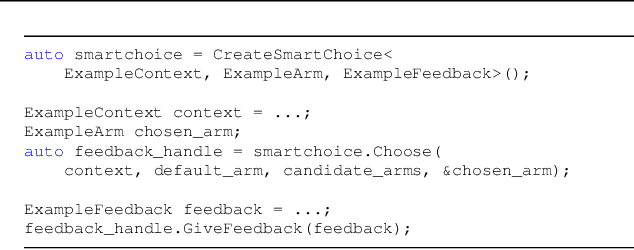
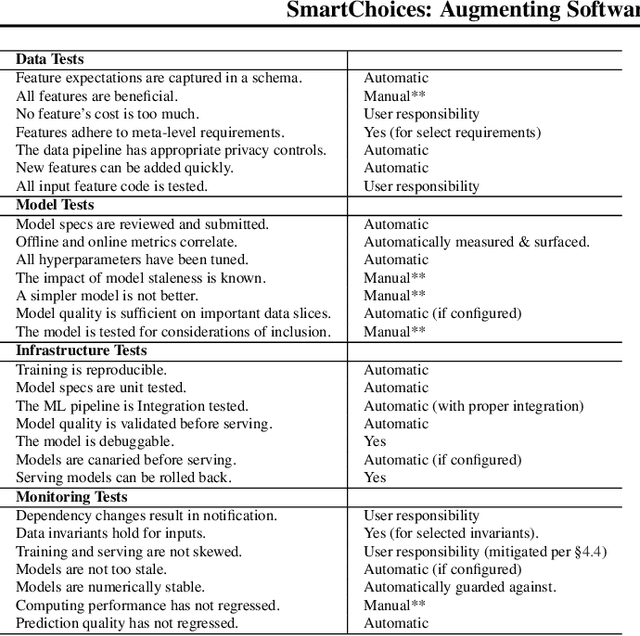

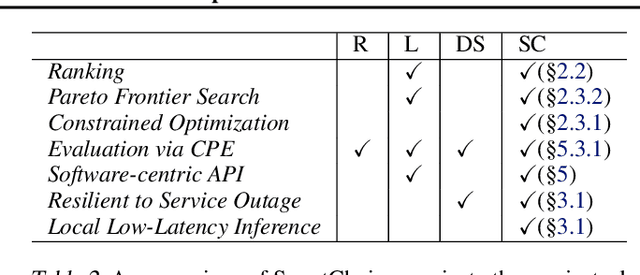
Abstract:We are living in a golden age of machine learning. Powerful models are being trained to perform many tasks far better than is possible using traditional software engineering approaches alone. However, developing and deploying those models in existing software systems remains difficult. In this paper we present SmartChoices, a novel approach to incorporating machine learning into mature software stacks easily, safely, and effectively. We explain the overall design philosophy and present case studies using SmartChoices within large scale industrial systems.
Transfer and Marginalize: Explaining Away Label Noise with Privileged Information
Feb 18, 2022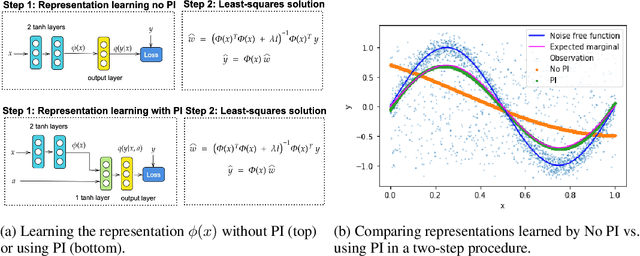
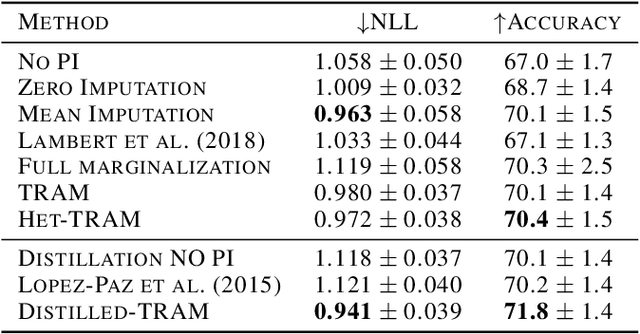
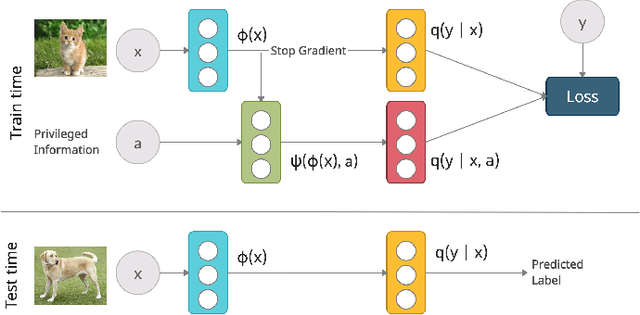
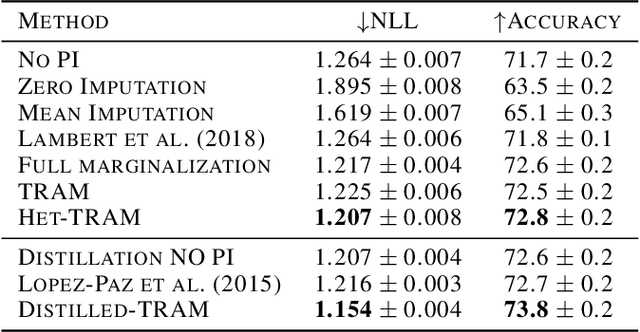
Abstract:Supervised learning datasets often have privileged information, in the form of features which are available at training time but are not available at test time e.g. the ID of the annotator that provided the label. We argue that privileged information is useful for explaining away label noise, thereby reducing the harmful impact of noisy labels. We develop a simple and efficient method for supervised neural networks: it transfers via weight sharing the knowledge learned with privileged information and approximately marginalizes over privileged information at test time. Our method, TRAM (TRansfer and Marginalize), has minimal training time overhead and has the same test time cost as not using privileged information. TRAM performs strongly on CIFAR-10H, ImageNet and Civil Comments benchmarks.
Correlated Input-Dependent Label Noise in Large-Scale Image Classification
May 19, 2021



Abstract:Large scale image classification datasets often contain noisy labels. We take a principled probabilistic approach to modelling input-dependent, also known as heteroscedastic, label noise in these datasets. We place a multivariate Normal distributed latent variable on the final hidden layer of a neural network classifier. The covariance matrix of this latent variable, models the aleatoric uncertainty due to label noise. We demonstrate that the learned covariance structure captures known sources of label noise between semantically similar and co-occurring classes. Compared to standard neural network training and other baselines, we show significantly improved accuracy on Imagenet ILSVRC 2012 79.3% (+2.6%), Imagenet-21k 47.0% (+1.1%) and JFT 64.7% (+1.6%). We set a new state-of-the-art result on WebVision 1.0 with 76.6% top-1 accuracy. These datasets range from over 1M to over 300M training examples and from 1k classes to more than 21k classes. Our method is simple to use, and we provide an implementation that is a drop-in replacement for the final fully-connected layer in a deep classifier.
Routing Networks with Co-training for Continual Learning
Sep 09, 2020



Abstract:The core challenge with continual learning is catastrophic forgetting, the phenomenon that when neural networks are trained on a sequence of tasks they rapidly forget previously learned tasks. It has been observed that catastrophic forgetting is most severe when tasks are dissimilar to each other. We propose the use of sparse routing networks for continual learning. For each input, these network architectures activate a different path through a network of experts. Routing networks have been shown to learn to route similar tasks to overlapping sets of experts and dissimilar tasks to disjoint sets of experts. In the continual learning context this behaviour is desirable as it minimizes interference between dissimilar tasks while allowing positive transfer between related tasks. In practice, we find it is necessary to develop a new training method for routing networks, which we call co-training which avoids poorly initialized experts when new tasks are presented. When combined with a small episodic memory replay buffer, sparse routing networks with co-training outperform densely connected networks on the MNIST-Permutations and MNIST-Rotations benchmarks.
Analysis of Softmax Approximation for Deep Classifiers under Input-Dependent Label Noise
Mar 15, 2020



Abstract:Modelling uncertainty arising from input-dependent label noise is an increasingly important problem. A state-of-the-art approach for classification [Kendall and Gal, 2017] places a normal distribution over the softmax logits, where the mean and variance of this distribution are learned functions of the inputs. This approach achieves impressive empirical performance but lacks theoretical justification. We show that this model is a special case of a well known and theoretically understood model studied in econometrics. Under this view the softmax over the logit distribution is a smooth approximation to an argmax, where the approximation is exact in the zero temperature limit. We further illustrate that the softmax temperature controls a bias-variance trade-off and the optimal point on this trade-off is not always found at 1.0. By tuning the softmax temperature, we achieve improved performance on well known image classification benchmarks with controlled label noise. For image segmentation, where input-dependent label noise naturally arises, we show that tuning the temperature increases the mean IoU on the PASCAL VOC and Cityscapes datasets by more than 1% over the state-of-the-art model and a strong baseline that does not model this noise source.
Ranking architectures using meta-learning
Nov 26, 2019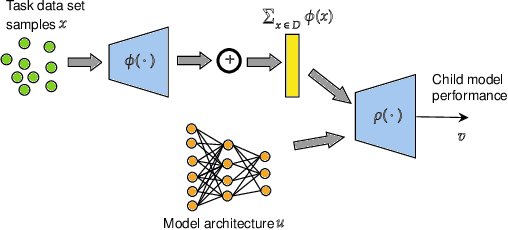

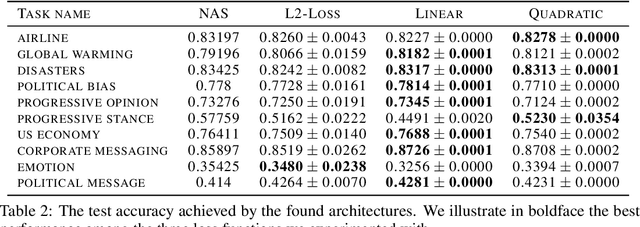

Abstract:Neural architecture search has recently attracted lots of research efforts as it promises to automate the manual design of neural networks. However, it requires a large amount of computing resources and in order to alleviate this, a performance prediction network has been recently proposed that enables efficient architecture search by forecasting the performance of candidate architectures, instead of relying on actual model training. The performance predictor is task-aware taking as input not only the candidate architecture but also task meta-features and it has been designed to collectively learn from several tasks. In this work, we introduce a pairwise ranking loss for training a network able to rank candidate architectures for a new unseen task conditioning on its task meta-features. We present experimental results, showing that the ranking network is more effective in architecture search than the previously proposed performance predictor.
Gumbel-Matrix Routing for Flexible Multi-task Learning
Oct 10, 2019



Abstract:This paper proposes a novel per-task routing method for multi-task applications. Multi-task neural networks can learn to transfer knowledge across different tasks by using parameter sharing. However, sharing parameters between unrelated tasks can hurt performance. To address this issue, we advocate the use of routing networks to learn flexible parameter sharing, where each group of parameters is shared with a different subset of tasks in order to better leverage tasks relatedness. At the same time, it is known that routing networks are notoriously hard to train. We propose the Gumbel-Matrix routing: a novel multi-task routing method, designed to learn fine-grained patterns of parameter sharing. The routing is learned jointly with the model parameters by standard back-propagation thanks to the Gumbel-Softmax trick. When applied to the Omniglot benchmark, the proposed method reduces the state-of-the-art error rate by 17%.
 Add to Chrome
Add to Chrome Add to Firefox
Add to Firefox Add to Edge
Add to Edge